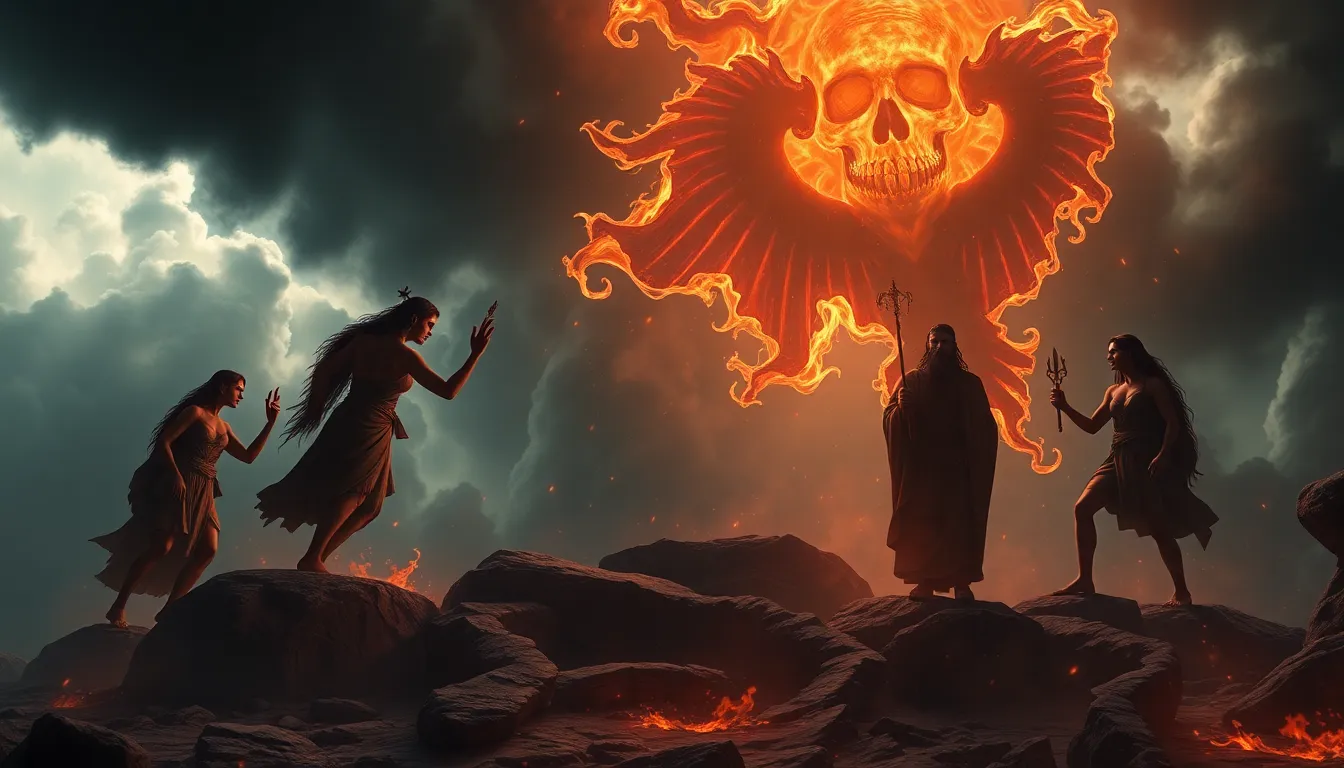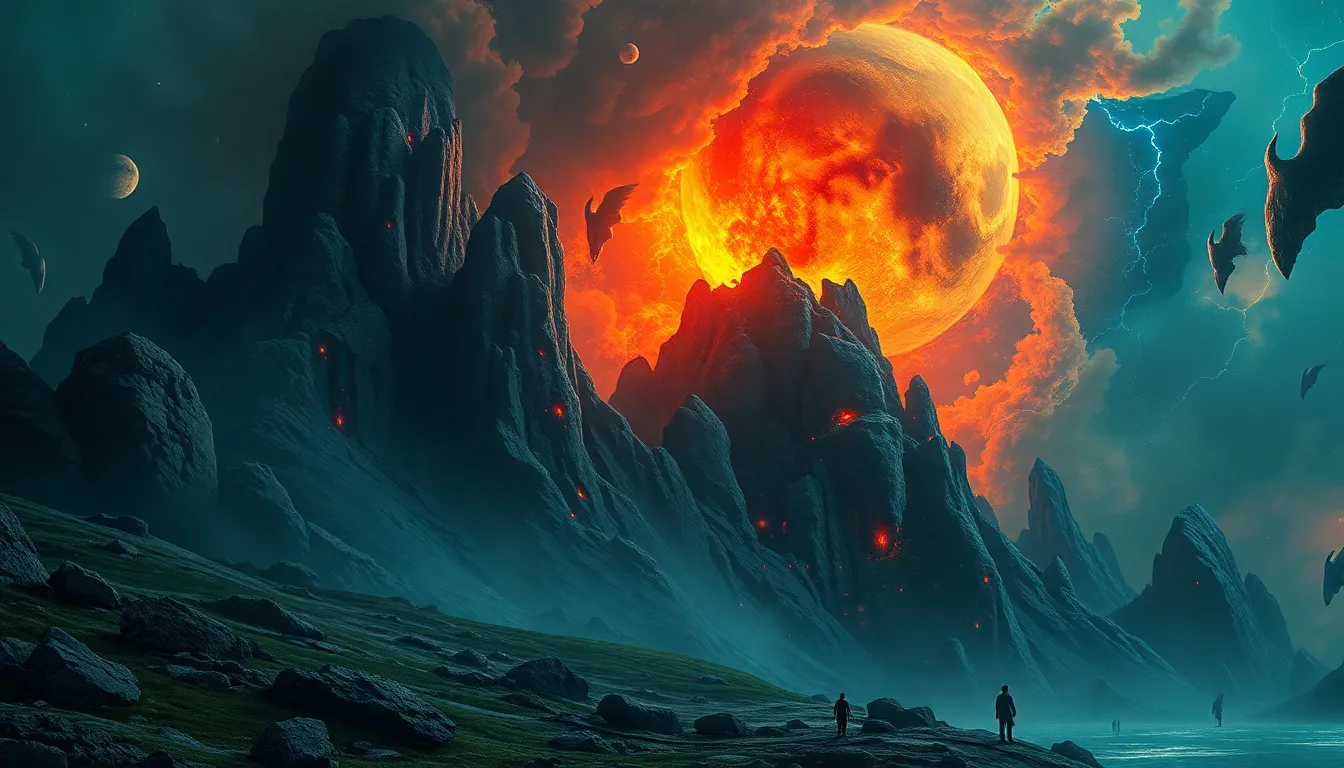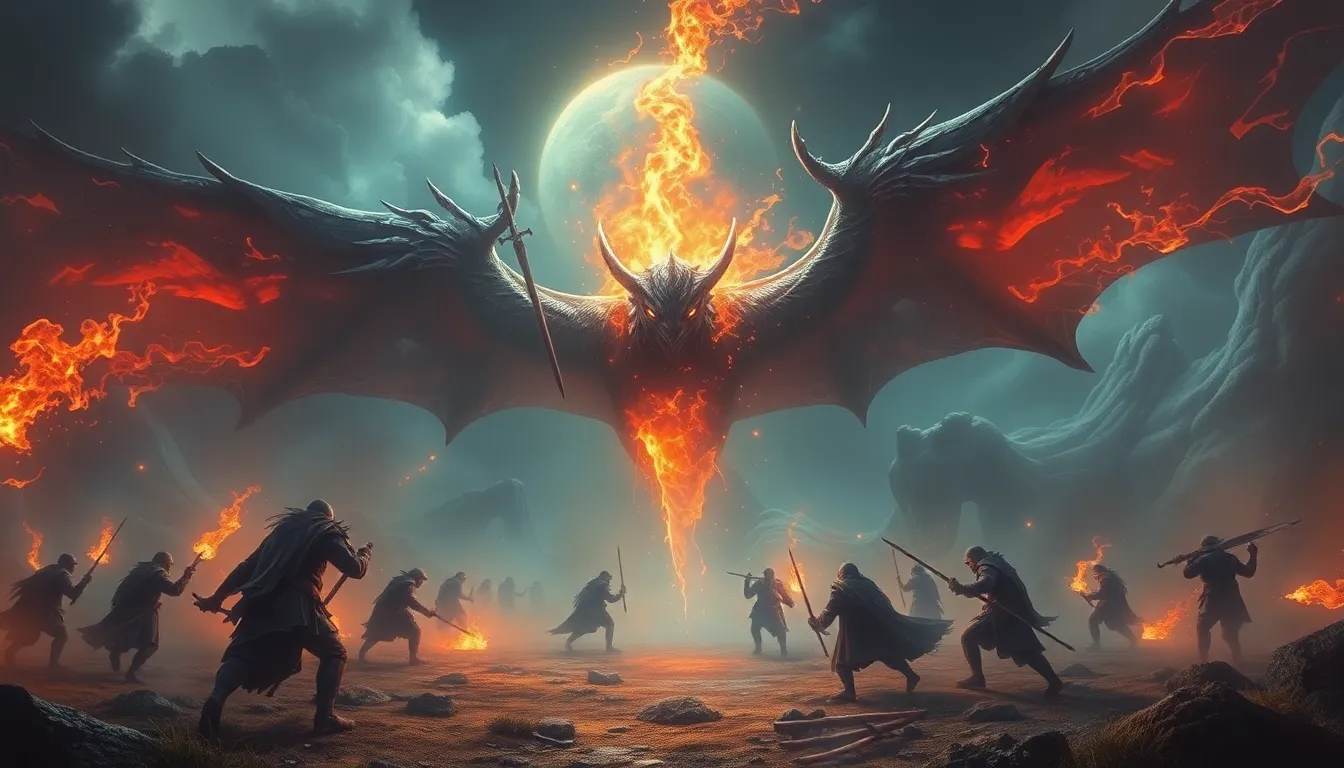Fenrir in Art and Literature: Depicting the Wolf Throughout History
I. Introduction
In Norse mythology, Fenrir is a monstrous wolf, a creature of immense strength and significant importance. As the offspring of the god Loki and the giantess Angerboda, Fenrir is prophesied to bring great destruction during Ragnarok, the end of the world in Norse belief. His narrative is rich with themes of fate, chaos, and the struggle against predestined outcomes. Fenrir has transcended his mythological origins to become a cultural symbol, representing both fear and inevitability.
This article aims to explore Fenrir’s representation in art and literature throughout history, examining how this formidable figure has been depicted across various cultures and mediums. From Viking Age artifacts to modern interpretations in films and literature, Fenrir’s legacy continues to evolve, reflecting societal concerns and artistic expressions.
II. The Mythological Origins of Fenrir
Fenrir’s role in Norse cosmology is pivotal. He is one of the three children of Loki, alongside Jormungandr, the world serpent, and Hel, the goddess of the underworld. As a creature destined to bring chaos, Fenrir’s existence is intertwined with essential Norse myths, particularly the prophecy surrounding Ragnarok, where he is foretold to kill Odin, the chief of the gods.
Key myths involving Fenrir include his binding by the gods, who feared his potential for destruction. They tricked him into being bound with a magical chain called Gleipnir, crafted from impossible ingredients. This act represents the gods’ struggle against fate and the inevitability of destruction. Fenrir’s thematic significance lies in his embodiment of chaos and destruction, challenging the order established by the gods.
III. Fenrir in Early Medieval Art
During the Viking Age, Fenrir found representations in various artifacts and runestones. Artists depicted him not only as a fearsome beast but also as a symbol of power and warrior culture. The intricate carvings on runestones often include motifs of wolves, and Fenrir’s image could signify strength, loyalty, and the warrior ethos.
- Runestones often feature depictions of Fenrir alongside scenes of battle and glory, illustrating his connection to the warrior culture of the time.
- Artifacts such as brooches and weapons sometimes bore engravings of Fenrir, serving as talismans for protection and strength.
The focus on Fenrir in early Scandinavian artwork highlights the duality of his nature: feared yet revered, a creature of destruction yet a part of the cultural identity of the Norse people.
IV. Literary Representations of Fenrir
Fenrir’s most notable appearances are in the Poetic Edda and the Prose Edda, two primary sources of Norse mythology. In these texts, Fenrir’s fate is intricately tied to the gods and the concept of inevitable doom.
- The Poetic Edda describes Fenrir’s binding and the prophecy surrounding Ragnarok, emphasizing his role as an agent of chaos.
- The Prose Edda elaborates on his lineage and the fears he instills in the gods, showcasing the tension between fate and free will.
The influence of these texts on later literary works is profound, with Fenrir serving as a symbol of primal fear and the struggle against destiny. In modern literature, authors often reinterpret Fenrir’s character, exploring themes of identity and existential dread.
V. Fenrir in Modern Art
Contemporary artistic interpretations of Fenrir reflect a blend of traditional motifs and modern sensibilities. Artists have reimagined Fenrir in various forms, including painting, sculpture, and digital art.
- Notable modern artists have created works that depict Fenrir as a tragic figure rather than purely a monster, exploring themes of captivity and resistance.
- Visual culture has seen Fenrir represented in various styles, from abstract to hyper-realistic, each offering a unique perspective on his myth.
The evolution of Fenrir’s image in modern art signifies a shift in cultural values, with a focus on the emotional and psychological aspects of his character, rather than just his destructive capabilities.
VI. Fenrir in Popular Culture
Fenrir’s representation extends beyond traditional art and literature into the realms of films, video games, and contemporary literature. His character often appears as a formidable antagonist, embodying chaos and destruction.
- In films, adaptations of Norse mythology frequently feature Fenrir as a fearsome beast, symbolizing the impending doom of Ragnarok.
- Video games such as “God of War” and “Assassin’s Creed” include interpretations of Fenrir, where players confront the wolf as a representation of fate and conflict.
These modern adaptations reinterpret Fenrir’s myth, bringing relevance to contemporary themes such as environmentalism and identity, often portraying him as a misunderstood creature rather than merely a monster.
VII. Symbolism and Themes Associated with Fenrir
Fenrir’s character embodies a complex duality: he is both a monster and a tragic figure, representing the chaos inherent in existence. This duality is crucial in understanding the symbolism associated with Fenrir.
- As a monster, Fenrir evokes fear and represents the chaos that threatens societal order.
- As a tragic figure, he embodies the struggle against fate, prompting discussions about the nature of free will versus destiny.
Furthermore, Fenrir serves as a metaphor for societal fears and challenges, reflecting anxieties about loss of control and the unknown, making him a timeless figure in both myth and modern discourse.
VIII. Conclusion
Across different mediums and throughout history, Fenrir has maintained a significant presence in art and literature. His character serves as a powerful symbol of chaos, fate, and the struggle inherent in the human condition. From ancient myths to modern interpretations, Fenrir’s story continues to resonate, reflecting the complexities of existence and the fears that accompany it.
As we reflect on Fenrir’s enduring legacy, it is evident that his narrative remains relevant in today’s cultural landscape, challenging us to confront our fears and engage with the themes of identity and chaos that define our lives.



